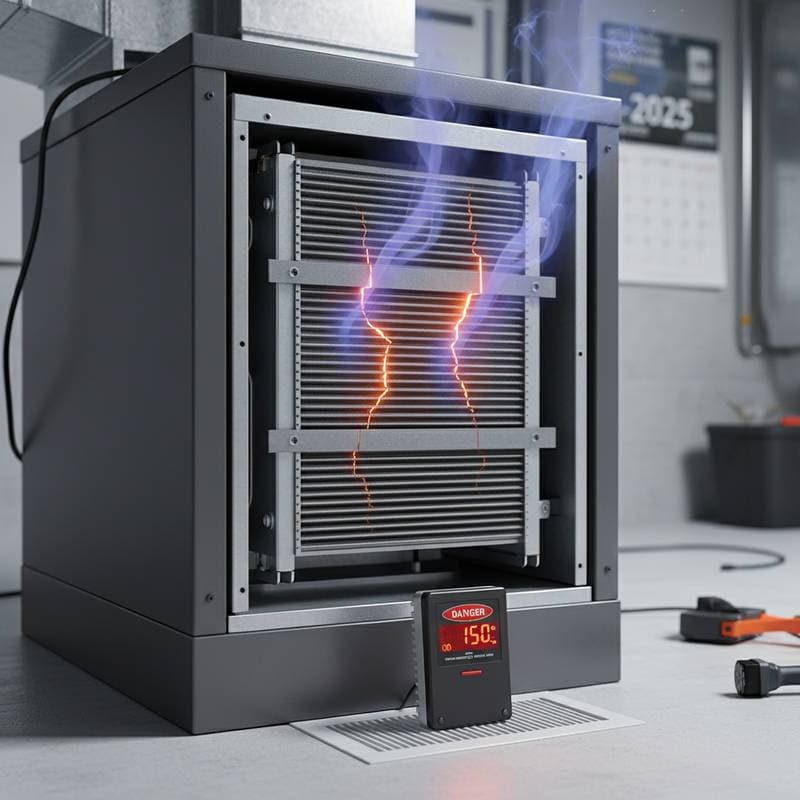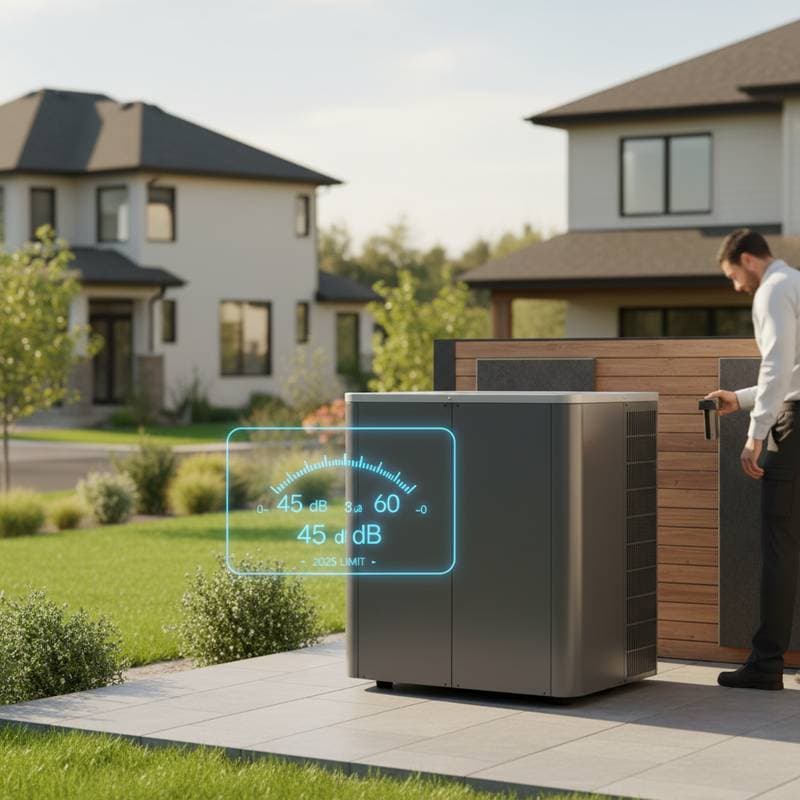The 89% Surge in Heat Exchanger Failures in 2025: Causes, Signs, and Prevention Strategies
Heat exchangers represent a critical component in modern furnaces, yet reports indicate an alarming 89% rise in their failures during 2025. This escalation stems from evolving manufacturing practices and shifting homeowner behaviors that compromise system integrity. Understanding these dynamics proves essential for homeowners seeking to avoid expensive repairs and potential health threats.
Furnaces rely on heat exchangers to transfer warmth from combustion gases to circulating air without mixing the two streams. When functioning properly, they maintain efficiency and safety. However, cracks or degradation in this component can lead to dangerous leaks, including carbon monoxide, a colorless and odorless gas that poses severe risks to occupants.
Understanding Heat Exchangers and Their Role
A heat exchanger operates as the heart of a furnace's heating process. It consists of a series of metal tubes or coils where hot exhaust gases pass through, warming the surrounding air that flows into living spaces. This design prevents direct contact between combustion byproducts and breathable air, upholding indoor air quality.
Most residential furnaces use shell-and-tube or plate-style heat exchangers made from steel or aluminized materials. These endure high temperatures, often exceeding 1,000 degrees Fahrenheit, while resisting corrosion from moisture and acidic condensates. Despite their robustness, recent trends in production have introduced vulnerabilities that accelerate wear.
The importance of this component extends beyond comfort. A compromised heat exchanger not only reduces heating efficiency but also invites regulatory inspections and insurance complications. Homeowners must recognize its foundational role to appreciate the implications of the 2025 failure surge.
Primary Causes Behind the 89% Increase
Several interconnected factors contribute to the heightened failure rates observed this year. Manufacturers have adopted thinner materials to reduce costs and improve energy efficiency ratings, but these changes diminish durability under stress. Industry data reveals that heat exchanger wall thickness has decreased by up to 20% in models produced since 2020, making them more susceptible to thermal fatigue.
Thinner Materials in Modern Furnaces
Contemporary furnaces prioritize lightweight construction for easier installation and lower shipping expenses. Steel sheets now measure as little as 0.018 inches thick, compared to 0.028 inches in older units. While this innovation supports compliance with stringent energy standards, it leaves less margin for expansion and contraction during heating cycles.
Over time, repeated thermal stress causes micro-cracks to form, especially in high-use environments. Homeowners in regions with extreme temperature swings, such as the Midwest or Northeast, report failures occurring after just five to seven years of service, far short of the 15- to 20-year lifespan of previous generations.
Neglected Maintenance Routines
Routine upkeep represents a cornerstone of system longevity, yet many households overlook it amid busy schedules. Annual professional inspections, including combustion analysis and visual checks, detect early wear before it escalates. Without these, dirt accumulation and uneven heating strain the exchanger beyond its limits.
Statistics from service providers indicate that properties with documented maintenance histories experience 65% fewer failures. Simple tasks, like replacing air filters every three months, prevent excessive pressure buildup that warps metal components.
Poor Airflow and System Imbalances
Restricted airflow exacerbates heat exchanger stress by forcing the furnace to operate harder. Clogged vents, closed registers, or undersized ductwork create hot spots where temperatures soar unevenly. This imbalance accelerates metal fatigue, leading to cracks in as little as two seasons of improper use.
Inadequate blower performance compounds the issue. Fans that run at reduced speeds due to belt wear or motor inefficiency fail to distribute heat adequately, causing localized overheating. Addressing airflow requires balancing the entire HVAC system, often through duct cleaning and register adjustments.
Corrosion from Environmental Factors
Moisture and chemical exposure erode heat exchanger surfaces over time. In humid climates or homes with poor ventilation, condensation forms acidic residues that pit the metal. Salt-laden air in coastal areas or pollutants from nearby industries intensify this corrosion, reducing material thickness by millimeters annually.
High-efficiency condensing furnaces, popular for their energy savings, produce more condensate, amplifying risks if drainage systems clog. Regular pH testing of drain lines and application of protective coatings can mitigate these effects, extending component life.
Aging Infrastructure in Older Homes
Many failures trace back to furnaces installed over a decade ago, now pushed beyond recommended replacement schedules. Aging units suffer from cumulative wear, including weakened welds and brittle coatings. The 89% surge partly reflects a wave of systems reaching end-of-life without upgrades.
Retrofit challenges in older homes, such as incompatible duct sizes or electrical capacities, discourage timely replacements. Homeowners benefit from assessing system age during home purchases or renovations to plan for proactive exchanges.
Recognizing Warning Signs of Failure
Early detection saves lives and fortunes. Homeowners should monitor for subtle indicators that signal impending issues.
- Unusual odors: A metallic or burning smell during operation suggests cracking, as exhaust gases mingle with room air.
- Visible soot or discoloration: Black residue around the furnace cabinet points to incomplete combustion from leaks.
- Furnace short cycling: Frequent on-off patterns indicate overheating, often due to exchanger restrictions.
- Increased energy bills: A 15% or greater spike in usage reflects inefficiency from compromised heat transfer.
- Flu-like symptoms: Headaches or nausea among household members may stem from low-level carbon monoxide exposure; install detectors immediately if suspected.
Professional diagnosis involves tools like combustion analyzers to measure gas levels and camera inspections for internal cracks. Ignoring these signs risks escalation to full system shutdowns or emergency calls.
Essential Prevention and Maintenance Steps
Preventive measures empower homeowners to counteract the rising failure trends. Start with a structured annual plan.
- Schedule professional inspections: Engage certified technicians yearly to examine the heat exchanger for cracks, using non-destructive testing methods.
- Maintain clean filters and coils: Replace filters quarterly and vacuum coils to ensure optimal airflow, reducing strain on components.
- Monitor humidity levels: Use dehumidifiers in damp areas to limit condensation; aim for 30-50% indoor relative humidity.
- Upgrade aging systems: Replace units over 15 years old with models featuring thicker exchangers and advanced diagnostics.
- Install carbon monoxide alarms: Place battery-backed detectors near bedrooms and the furnace; test monthly.
- Balance airflow regularly: Have ducts inspected biennially to eliminate restrictions and ensure even distribution.
These actions not only avert failures but also qualify for energy rebates and warranties. Investing 200 to 500 dollars annually in maintenance often prevents thousands in repair costs.
Safeguarding Your Home for Long-Term Peace of Mind
By addressing the root causes of heat exchanger vulnerabilities, homeowners secure reliable heating and family well-being. The 89% failure increase in 2025 serves as a wake-up call to prioritize system care amid manufacturing shifts. Implementing these strategies transforms potential hazards into manageable routines, ensuring warmth without worry through seasons to come.





